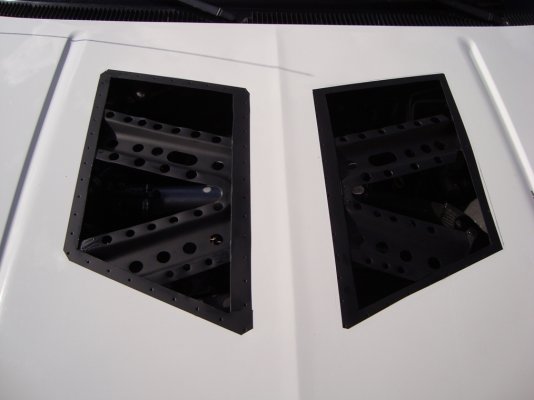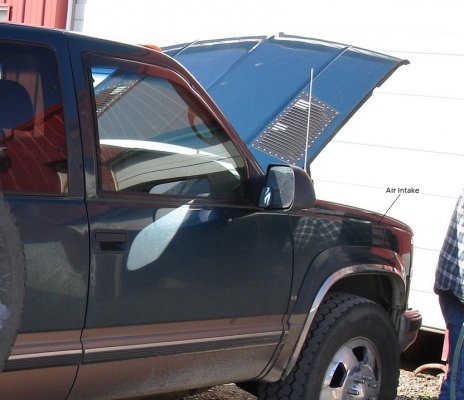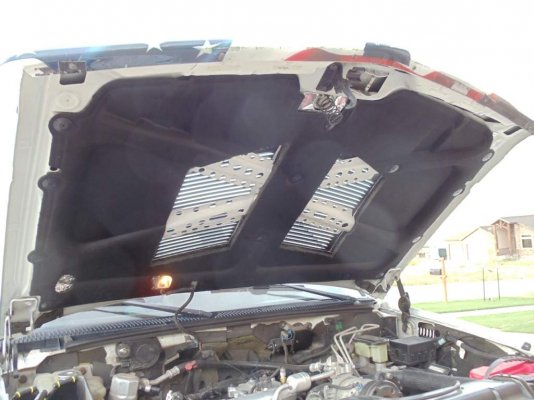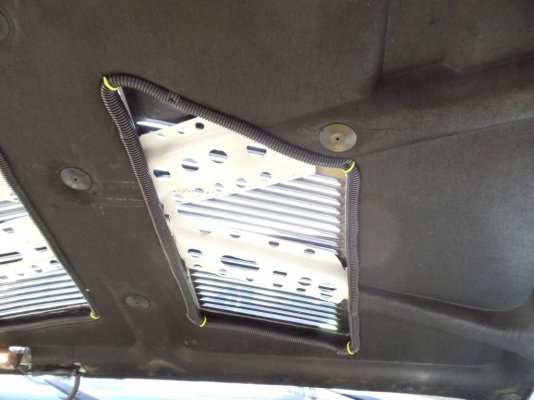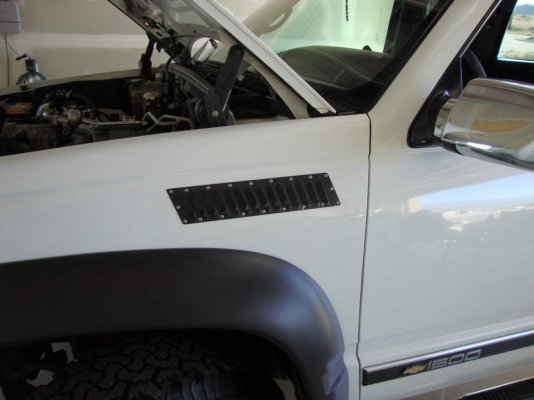yevgenievich
I'm Awesome
This was a relevant excerpt that I found posted by FellowTraveler:
"Past the radiator shroud to vent hot air and determined about a foot of that area after shroud is good for vent at all speeds except as noted the results were drivers side vented w/o problems at all speeds the passenger side pulled air in at all speeds the pulling in of air depends on rotation of cooling fan. Farther back @ center of hood the air vents at low speed and is pulled into the engine bay/bonnet at speed however this are is great for venting at lower speeds. The trailing edge of the hood/bonnet always pulls air in which is good for a sealed cowl intake to the 6.5td. I also have the area around the passenger side of the 6.5 busy w/IC/CAC pipes too which disrupts airflow on passenger side. All GMT400's have upper inner fender vents that vent at the area between the trailing edge of the fender and leading edge of the front door works somewhat but fender vents enhances the flow there and the turbo side will always flow out hotter air from under the hood/bonnet."
"Past the radiator shroud to vent hot air and determined about a foot of that area after shroud is good for vent at all speeds except as noted the results were drivers side vented w/o problems at all speeds the passenger side pulled air in at all speeds the pulling in of air depends on rotation of cooling fan. Farther back @ center of hood the air vents at low speed and is pulled into the engine bay/bonnet at speed however this are is great for venting at lower speeds. The trailing edge of the hood/bonnet always pulls air in which is good for a sealed cowl intake to the 6.5td. I also have the area around the passenger side of the 6.5 busy w/IC/CAC pipes too which disrupts airflow on passenger side. All GMT400's have upper inner fender vents that vent at the area between the trailing edge of the fender and leading edge of the front door works somewhat but fender vents enhances the flow there and the turbo side will always flow out hotter air from under the hood/bonnet."


